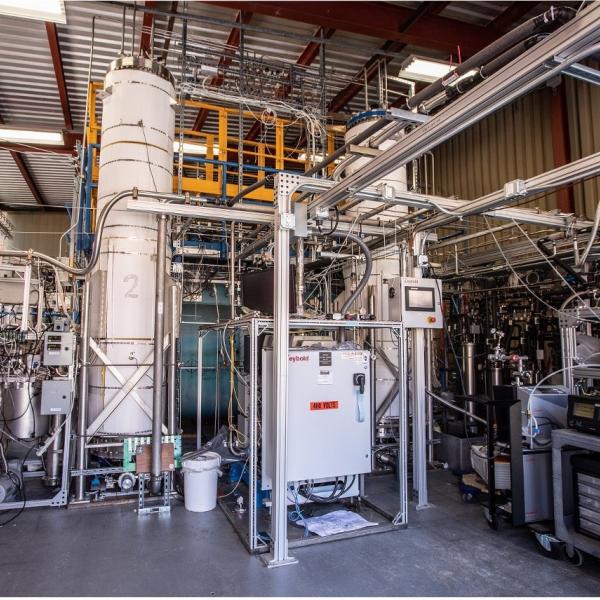there's been evidence for several decades that there is mass in the
universe that we haven't been able to account for
--you can't see it directly with telescopes
it doesn't like to interact with light
you can't reflect light off of it
it doesn't really like to emit light but in spite of that it does seem
to have mass and does seem to gravitationally influence other things
in distant galaxies
we haven't detected it in the direct sense
and that's what LZ is trying to do
Hi i'm Knut Skarpaas, the 8th and that's
Knut Skarpaas, the ninth,
Knut Skarpaas the seventh was actually possibly the first
engineer at SLAC
so there was some interest in making some grids for LZ
the grids were very large
I was suggesting that we put weights on every wire to get nice tension
--the only way to do that I figured was to make a loom so I started
looking at looms and things from my childhood like these things from my
mother back when I was a little kid we used to do little crafting things and I
was looking at how they made badminton rackets and then I started studying like
Navajo women weaving...weaving from Egyptian times, some Scottish and Irish
weaving all kinds of different ways to make thread interact
then I basically took these techniques and mixed them
with my CAD
to make the geometries perfect
and made a system where I could actually have a factory
that would create metal cloth under tension that would move on rails and it
would just leave this path of tension cloth behind it
my name is Rachel Mannino
and I'm a postdoc on the LZ experiment
--my name is Ryan Linehan I'm a graduate student
When we're getting ready to build a grid, the first thing we do is we get the
loom ready right so we make sure everything's clean
the loom is in a class 100 clean room
you set up two different directions of wires so first
you set all the wires that go in one direction called the warp direction
then you start weaving in the second direction
and the way the heddles work
is it'll take like the say odd numbered wires
bring them up and the even-numbered wires go down
and then you just kind of drive a wire through that opening
then once you actuate the heddles you
can flip them and capture that wire in place and you just kind of repeat that
just before gluing, there's kind of a small step that is important for a
certain set of grids called alignment we need to get a giant ring positioned
correctly to at max about two times the width of a human hair
now the gluing is another very difficult part we bring this this ring up
underneath the mesh we push it up against the mesh to ensure contact
between the wires and the ring and then we lay down a bead of glue
-with a robot, nonetheless
the way we do that is with a giant 3D printer that spits glue
out and kind of orbits around the ring several times to extrude
all the glue that we need
--fun facts is that this robot flies about 200 microns above the
surface of the wires and and extrudes glue that close when you have the glue
down you take another ring and you put it on top of that glue so you basically
sandwich the wires in between two rings and wait until the glue is dry then you
have your grid and you can cut the grid out from the mesh and everyone
celebrates because we've successfully completed a grid --yeah!
there's this balance
between your structural stability --your mechanical stability and then also
making sure that it'll perform the way you want it to perform
a problem with the scale of LZ
is that it's so big that if you have a parallel wire you can get
some deflection and your wires gonna sag in the center and we don't want that
because you want really uniform electric fields in our detector
other design considerations are
you want to make sure that your photomultiplier tubes at the
top of the detector which are actually detecting your signal, right
they're seeing the light from these collisions
and your xenon you want to make sure that they're
not going to be blocked by the wires themselves
so you want to make sure that your opacity
is really low that light can get through the mesh so
that kind of helps determine the wire diameter
so a lot of different design considerations
they do have commercial meshes available
but not in the size we wanted so once
people decided that they wanted a mesh they had to make it themselves or change
the scope of the detector and they didn't want to make the detector smaller
because that would make it less sensitive
(this is the first real one, that's going to actually go in the detector)
we will box them up and ship them out to South Dakota to SURF
which is the Sanford Underground Research Facility in Lead, South Dakota
it's there that they will be assembled
into LZ and will be kind of bottled up
and put underground into a mine
where it will then be turned on in the coming months
[SLAC logo & music]
